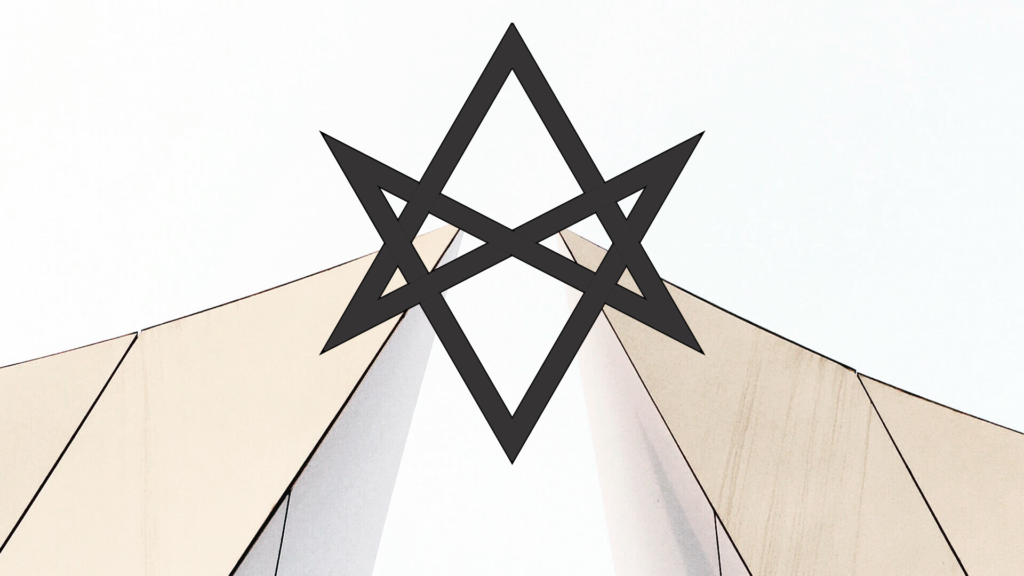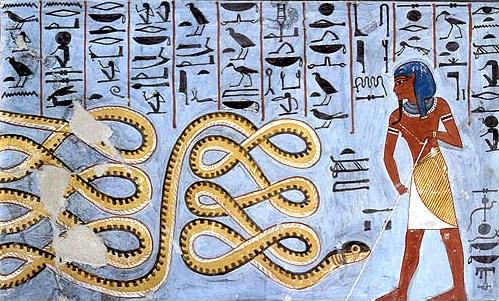Everything is simultaneously shining but also withdrawing into its depth.
The Two Foundations of Thelema

One of the most prevalant memes within Consensus Thelema is the idea that Crowley changed his mind so many times on so many different issues, it’s pointless to try to isolate any invariant “truth” within his thought. (Therefore it’s up to each individual to define for themselves what Thelema is blah blah blah let’s open another bottle of Apothic Red.)
But Crowley wasn’t that much of a creative genius. He had two insights, one theoretical, one practical.
The theoretical insight comes from the Kabbalah, mainly Samuel Mathers’s “Introduction” to Kabbalah Unveiled, his translation of Kabbalah Denudata. In particular, Crowley takes the idea of Ain, makes it the centerpiece or first principle of his world outlook, and draws implications from it that Mathers himself didn’t seem very interested in but which are reminiscent of how this idea was received in German language philosophy of the previous two centuries. By the time Crowley seriously engages with eastern philosophy, he has this Ain idea firmly fixed in his head, and he has a tendency to conform eastern philosophy (particularly Taoism) to it.
The practical insight—what I have called erotic liberation—probably comes from the fin de siècle decadent movement. It’s already on display in his 1898 poem, “Jezebel”. There you can see the mix of sadomasochism, cannibalism, and destruction (moral and physical) through eroticism that comes to define a lot of Crowley’s own spiritual praxis.
The practical insight probably precedes the theoretical insight, although the spiritual importance of the practical side lies in the fact that it reveals or discloses the first principle which organizes the theoretical side. In other words, Crowley may have insisted upon a mathematical deduction of his first principle in “Berashith” and Magick Without Tears, but neither mathematics nor reason in general are the main means by which one encounters the first principle in its fullness. That only comes about through the ecstastic practices Crowley eventually calls magick.
These ideas were formed whole in Crowley’s mind by the time he was 25 or so. Anything he encountered after that, he tended to wrap around or conform to these ideas.
As an aside, this is why it’s wrong to treat Thelema as a mere appurtenance to ceremonial magick, as though Thelemic magick is basically Golden Dawn ceremonial magic but done with a badboy attitude. While drawing shapes in the air and mispronouncing Hebrew are certainly aspects of the Thelemic magical tradition, that’s not the center of gravity of Thelemic praxis. One would be closer to the mark emphasizing transcendence through the encounter with potent (sexual) disgust—through the Pe in particular.
Being a conduit for the divine

One of the salient differences between Thelema and the Buddhism of the Pali suttas is that in Buddhism incarnation is seen as something to be overcome and abandoned, in Thelema it serves the purpose of the self-realization of a higher, divine consciousness.
Thelema has that Buddhistic idea of seeing through the illusion of a separate self. When everything you consider to be “you”—what in Buddhism are called the aggregates or heaps—is seen to rightfully belong to Nuit, then the way is clear for the true self (Hadit) to unite with Nuit. This is what I’ve called the path of erotic liberation or surrender to the divine feminine.
But that’s only one half of the story. If we leave it there, we get a Buddhistic version of Thelema, but then you’re left wondering why Hadit would have created the sense of separation from Nuit in the first place. It’s what I referred to as hiding your car keys on yourself in my talk Light of the Shadow.
The idea in Thelema is that what you conventionally call “you” is not simply an obstacle to be overcome but instead serves a divine purpose. In the Noble Eightfold Path, you see permanently through the illusion of self, you permanently relinquish attachment, and it’s like pulling the eject lever on the cockpit. You’re off the ride. That’s not the Thelemic story.
In Thelema “you” (conventionally so-called) serve an intermediary function between the divine and itself. Once the true nature of sensation is understood, you become a daimon or a magician or a navi (a forth-speaker on behalf of the divine). But you can only serve that function once the delusion of separation from the divine has been destroyed.
As I said in “Light of the Shadow,” we sometimes operate under the delusion that the senses separate our consciousness from reality or cut us off from the truth. This is actually a common sense notion. But if the senses are themselves divine, then the problem is not that we have senses; the problem is that we don’t know how to use our senses properly—with the result that they end up using us instead. And so the path of liberation requires a kind of “aesthetic education” (after the Greek word for sense perception, aisthēsis).
Toward Erotic Liberation in the Mass
Thelema can be looked at as a path of return to nature (Nuit, Babalon, or Isis), from out of death (Osiris), by means of the spirit of erotic destruction (Apophis or the HGA). It’s the IAO formula in reverse.
The spirit of erotic destruction takes the form of Baphomet in Liber XV. Baphomet is the Lion-Serpent (HGA) that destroys the destroyer (death or limitation) by means of love. Paradoxically we invoke annihilation upon ourselves so we may live for the first time.
This mystery is presented as a cultic rite in Liber XV.
Erotic destruction and IAO

One of the most interesting parts of Magick in Theory and Practice is chapter 20, “Of The Eucharist and the Art of Alchemy.” This chapter—particularly what Crowley says here about art production—was the subject of a talk I gave last summer for Horizon Lodge in Seattle.
In chapter 20 Crowley says that alchemy, initiation, talisman creation, art production (specifically painting, but the claim could be extended to other media), and eucharistic magick all share the same structure. There aren’t actually so many other types of magick besides those, so he’s presenting something like a unified theory of magick in general.
But even if that doesn’t cover every magical art, it still covers two areas that were of essential concern to Crowley: initiation and the production of the eucharist (which is a type of alchemy). The first is the primary subject matter of A∴A∴; the second is connected with the secret contained within the Sanctuary of the Gnosis of O.T.O.
My assumption was that if Crowley was talking about a structure essential to the essential work of both A∴A∴ and of O.T.O., he was describing something lying at the core of his spiritual project generally. What I claimed in my talk was that the magical formula which describes both of these processes is IAO.
IAO is the Golden Dawn formula of resurrection: Isis (Nature) is ruined by Apophis (the Destroyer) which is then redeemed by/as Osiris.
What I said in my talk, however, is that there is a shift in emphasis in Crowley’s version, because Apophis is no longer the ruiner of anything other than the false, initial appearance of nature. Through its destructive power, it frees or liberates what was latent, concealed, or in a sense trapped in the initial matter. It allows the “true self” latent within the first matter to transcend itself—to transcend its initial appearance—and to become part of a larger, vitalizing whole.
It doesn’t do this by discarding the matter necessarily but rather by turning it from resistance to persistence. Thus fire becomes the power of willing, water the power of daring, air the power of knowing, and earth the power of keeping silence. When they are in balance, thus arises the fifth power, going, attributed to Hadit.
In the process, change becomes expressive of will, thereby satisfying the postulate of magick. At the same time, because will is fully expressed in change—because matter no longer stands opposed to will but is its vehicle or “artistic medium”— it no longer has an existence independent of the universe. Hadit has become mystically enraptured with Nuit.
Thus there is a link between the work of Apophis in the IAO formula with love under will. Apophis represents destruction of separateness by love: the power of rebirth by voluntarily submitting to transformation.
Apophis is the spirit of erotic transcendence.



